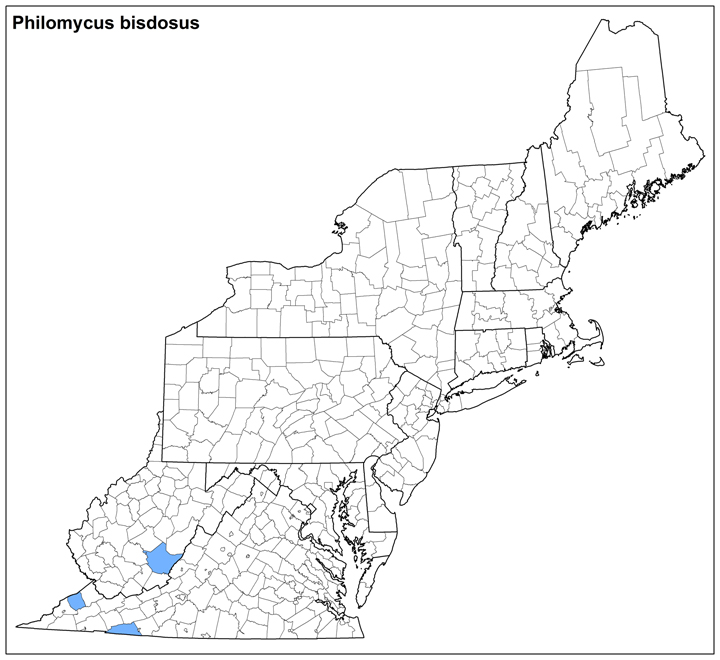Land Snails

Photos: Image not available at this time
Philomycus bisdosus (Branson, 1968)
Family: Philomycidae
Common name: Grayfoot Mantleslug, Breaks Mantleslug
Identification
Length: 50-85 mm
Like all other philomycids, the body is covered by mantle. It is light tan in color with four wavy brown longitudinal bands, including two (sometimes one) along the mid-dorsum and a thinner band along each side. The bands merge towards the tail and break up into spots toward the anterior. The head is white and tentacles blue-black, and the body under the mantle is white with dark pigment towards tail. The foot margin is gray, and sole is light gray. The mucus covering the body is white and sticky (Branson, 1968; Fairbanks 1989), and the mucus produced when the animal is disturbed is whitish (Dourson, 2010).
Philomycus bisdosus is similar to P. virginicus, but P. virginicus is darker, its stripes reach its mantle edge, and its genitalia have different dimensions (see Branson, 1969). Philomycus togatus also bears some resemblance to P. bisdosus but has an orange foot fringe, orange mucus on its sole, a differently shaped penis, and a larger dart sac (Fairbanks, 1989).
Ecology
Philomycus bisdosus lives in hardwood forest and takes shelter under moist, rotting logs (Branson, 1968; Dourson, 2010). These slugs are found to co-occur with P. carolinianus and P. togatus (Fairbanks, 1989).
Taxonomy
There are no synonyms.
Distribution
The species is an endemic thought only to occur on the border between westernmost Virginia (Dickenson and Grayson Counties) and easternmost Kentucky in Breaks Interstate Park. However, there is a record for southeast West Virginia (Greenbrier County).
Conservation
This narrow endemic is known from only a few central Appalachian Mountain counties. The species does not currently appear in NatureServe Explorer.
Megan Paustian 6/2017
Range Map (Click to Enlarge)


